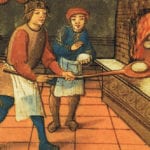 Weird Stuff
Weird Stuff  Weird Stuff
Weird Stuff  Our World
Our World 10 Archaeological Discoveries of 2025 That Refined History
 Weird Stuff
Weird Stuff 10 Fascinating Facts You Might Not Know About Snow
 Miscellaneous
Miscellaneous Top 10 Things Crypto Was Supposed to Change & What Actually Did
 History
History 10 Huge Historical Events That Happened on Christmas Eve
 Music
Music 10 Surprising Origin Stories of Your Favorite Holiday Songs
 History
History 10 Less Than Jolly Events That Occurred on December 25
 Weird Stuff
Weird Stuff 10 Funny Ways That Researchers Overthink Christmas
 Politics
Politics 10 Political Scandals That Sent Crowds Into the Streets
 Weird Stuff
Weird Stuff Ten Bizarre Facts About The Doge Meme
 Weird Stuff
Weird Stuff 10 Weird Things People Used to Do at New Year’s
 Our World
Our World 10 Archaeological Discoveries of 2025 That Refined History
 Weird Stuff
Weird Stuff 10 Fascinating Facts You Might Not Know About Snow
Who's Behind Listverse?

Jamie Frater
Head Editor
Jamie founded Listverse due to an insatiable desire to share fascinating, obscure, and bizarre facts. He has been a guest speaker on numerous national radio and television stations and is a five time published author.
More About Us Miscellaneous
Miscellaneous Top 10 Things Crypto Was Supposed to Change & What Actually Did
 History
History 10 Huge Historical Events That Happened on Christmas Eve
 Music
Music 10 Surprising Origin Stories of Your Favorite Holiday Songs
 History
History 10 Less Than Jolly Events That Occurred on December 25
 Weird Stuff
Weird Stuff 10 Funny Ways That Researchers Overthink Christmas
 Politics
Politics 10 Political Scandals That Sent Crowds Into the Streets
 Weird Stuff
Weird Stuff Ten Bizarre Facts About The Doge Meme
10 Common Misconceptions About Castles
Castles are one of the most popular remnants of the Middle Ages still standing today, but they are also some of the most misunderstood.
Many of us think of them as dark, gray, cold places that must have been miserable to live in, but in their heydays, they were brightly colored, warm, and comfortable. We imagine them bustling with armed men, but in times of peace, most castles had fewer than 20 soldiers in their garrisons. And many of us forget that their interiors would have been dominated by wooden structures, all of which have long rotted away.
In this list, we’re going to separate the facts from the misconceptions and tell you ten things people commonly get wrong about castles.
10 They Had Large Garrisons
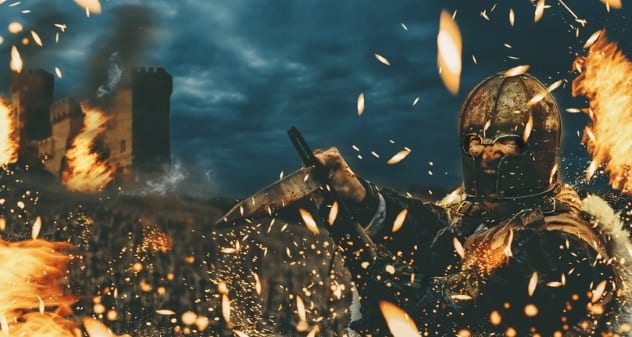
When we think of castles, we imagine them as heavily guarded military buildings whose main purpose was to control the local population. But most of the time, a castle was not nearly as well-garrisoned as we might expect. In medieval times, the most well-defended castles in England were the ones that lay along the Welsh and Scottish borders, but even these rarely had more than 200 men in them at a time. A manuscript from Wark Castle on the Scottish border has survived: Written in 1545, it tells us that the garrison was ten gunners and 26 horsemen, suggesting that the garrison’s main purpose was to perform duties outside the castle walls. The manuscript notes that “there marches within the castle, every night, 8 persons, and 2 searching for the same watch.”[1]
And that was in a border castle. Most castles across the country were private residences and were primarily the home of the lord’s family and staff, with a few armed retainers on hand in case trouble broke out. It was not unusual for a castle to have fewer than a dozen soldiers in it at any one time, and sometimes none at all. The reason? There simply wasn’t any need for them. Even in the event of a siege, a relatively small garrison could hold a castle for months if they shut the door and manned the towers with their bows. In fact, in such situations, a small garrison could even be a positive thing because it could survive longer on less food. Whether a castle had ten or 1,000 men in it, the attackers still had to spend weeks building siege equipment to break down the defenses before they could enter—more than enough time for a relief force to come along and drive them away.
9 The Great Hall Was For Feasting
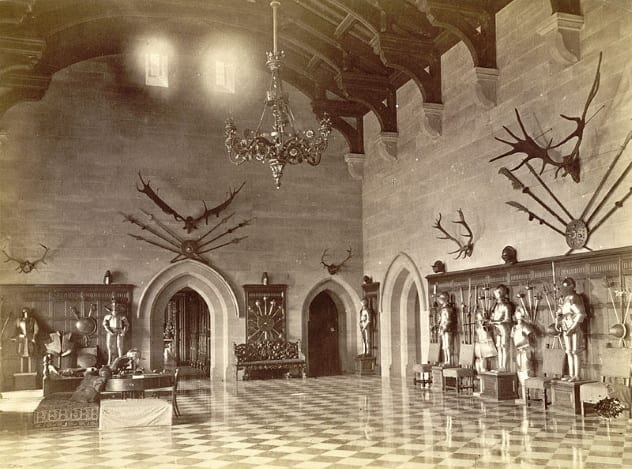
Castles are missing one key feature that we find in military buildings today: barracks. Yes, another reason that castles often had small garrisons was that there simply wasn’t enough room to house them. If a castle was expecting an assault, a garrison could be inflated by temporarily stationing some soldiers there. More often than not, these extra men would have lived out of tents in the bailey. But for the most part, the soldiers and staff who lived in a castle on a daily basis slept in the great hall.[2]
In our popular imagination, the great hall was a place solely for feasting, but in medieval times, it was more than that: It was the center of castle life. It was the place where councils were held, food was eaten, music was listened to, and where everyone slept at the end of the day. In the early period, the lord and his family slept there, too, usually in a nice bed at the far end of the hall, hidden behind a curtain. As time went on, castles more commonly included a solar, a set of private quarters for the lord and his family. The solar was usually above the great hall and sometimes even contained small peepholes which the lord could use to make sure the people in the hall were behaving.
This sleeping arrangement might sound horrific to us today, but medieval people were much more used to communal living than we are. The average medieval soldier or servant would have thought nothing of lying down to rest on some fresh rushes in the great hall at the end of the day.
8 They Weren’t Decorated
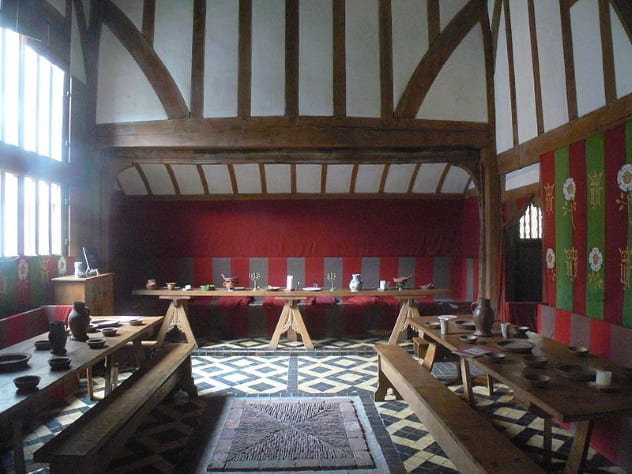
When we walk around castles today, we’re struck with a distinct impression of how boring and ugly it must have been to live in one. All those bare floors and gray walls must have been so depressing. The thing is, we often forget that the Middle Ages were full of color—it’s just that most of it has disappeared.[3]
A medieval castle was no exception. Especially if it was the home of a noble family, it would have been luxuriously decorated in its day, with everything from carved wooden furniture, wall tapestries, and elaborate rugs to plaster. Lots of plaster.
When you look at a castle in a medieval illustration, a lot of the time it’s smooth and white. This is because they whitewashed them, inside and out. Especially in the age before cannons, once a wall was up, a lord could be fairly sure it wasn’t coming down again anytime soon. And because it was the fashion, he would have thought nothing of paying to get it covered with smooth, white plaster. Once that was done, the interiors would have been painted with bright reds, yellows, and blues. Of course, plaster isn’t nearly as durable as stone, so over time, the plaster has largely fallen away, and most of it is now lost. But traces of it can still be seen on some medieval walls if you look closely enough.
7 They Were All Owned By Knights
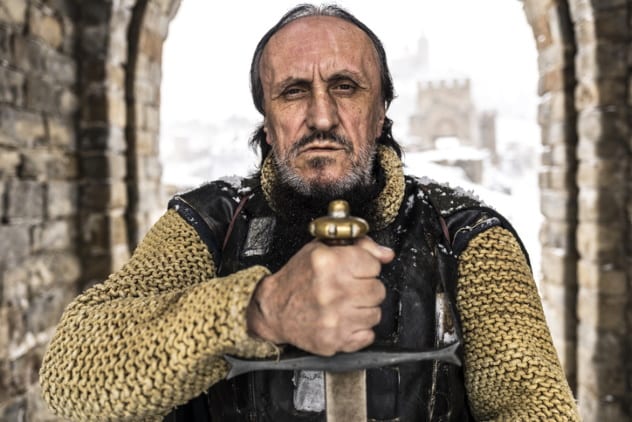
In the popular imagination, castles were the homes of knights. And they were, for the most part. A good many, though, were the property of the Crown. Particularly in areas of strategic importance, castles were predominantly used as military installations, and the best way for the king to ensure that he retained control of these sites was to keep them in his own possession. For the most part, the castles of Wales and the Anglo-Scottish March were the property of the English king, who sent a castellan to hold them in his name. Most of the time, castellans were trusted military officers who were close to the king—and they didn’t necessarily have to be of noble blood. Especially in Wales, where the castles often had luxurious private quarters, one of the best jobs a lowborn man could aspire to was the position of royal castellan, which would have made him a lord in all but name.[4]
Of course, he didn’t have an actual claim to the castle. But the position of actual landholding nobles wasn’t much better. Because William the Conqueror wanted to control England as wholly as possible, he introduced the concept that all land in the kingdom belonged to the monarch. Anyone who owned anything owned it on lease from the king. Most of the time, when a noble died, his property fell back into the hands of the king. A royal officer, the escheator, would then try to determine who the rightful heir of the property should be. If one wasn’t found, it became the king’s property again. This practice also made it very easy for the king to seize the property of any noble who turned against him—that noble was, after all, only renting the king’s belongings. This law, which actually exists in England to this day, meant that no lord technically owned his castle; he was just renting it.
6 Lords Could Build Them Where They Wanted
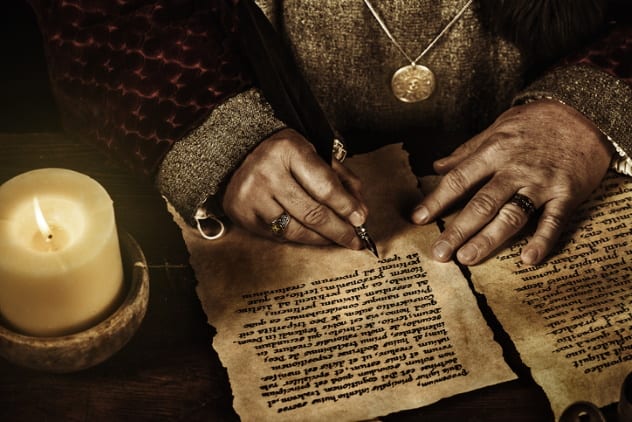
The laws around castle building and owning didn’t stop there. We may be tempted to think that any lord who had the money and the means could build a castle on his land, but this, too, was untrue. Any landowner who decided to build a castle suddenly became a much bigger threat to the monarch. Because of this, the English Crown made it a point of law that to legally fortify a residence, a lord had to hold a License to Crenellate.[5]
Much like obtaining planning permission for a housing extension today, if a medieval lord wanted to build a castle, he had to apply to the royal court for a License to Crenellate. The monarch only issued a handful of these each year, so to be successful in applying for one was a big deal. They could also take a long time to be issued: As with many important documents at the time, the License to Crenellate had to be issued personally by the king, who was more often than not very busy. It would then pass through several rings of the royal administration, being recorded on the Patent Roll for the royal records and then issued as a formal document, stamped with the Great Seal, for the knight’s personal records—in case a royal official asked for proof years down the line.
5 They Had Dungeons
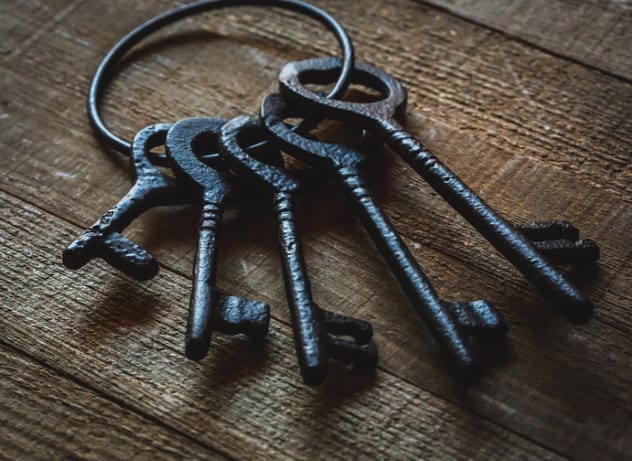
One of the most infamous and terrifying features of the medieval castle was the dungeon. At least, that’s what we often think. If you asked an early medieval castle-dweller where the don-jon was, though, he would have pointed upward. This is because the Old French term don-jon meant “great tower.” When castles were first built, they certainly didn’t contain dedicated dungeons—in fact, medieval people didn’t really have a concept of locking people up as punishment. They did, however, find that they occasionally had to keep people in captivity, usually wealthy prisoners captured in times of war who needed to be held for ransom. Whenever a castle’s garrison had to hold someone against their will, they put them at the top of the great tower, the room that was the hardest to escape from and easiest to guard.[6]
As the Middle Ages went on, though, castles became more complex and luxurious, and more and more people had to be held prisoner. Punishing prisoners became more accepted, so it became normal practice to put prisoners in the dark, nasty parts of the castle—the lowest floor of a tower, for example, or an old storage room, both of which usually lacked windows. The word “dungeon” evolved to mean a dark, nasty place of confinement, the meaning we still attach to it today.
4 They Were All Made Of Stone
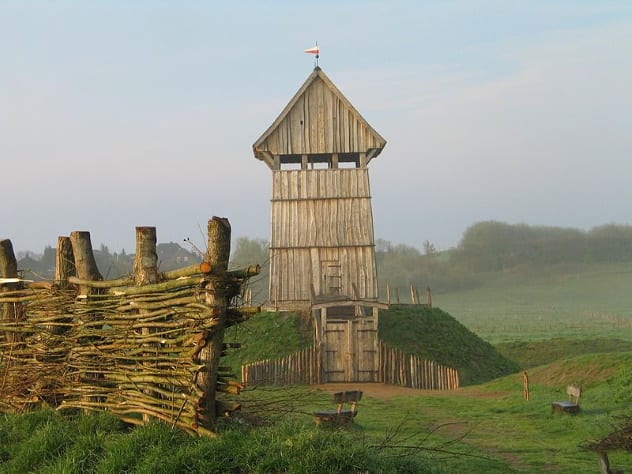
The castles that have survived into the modern age are made of stone. This makes it easy to think that all castles were made of stone, but that wasn’t necessarily the case. Especially for poorer landowners, a wooden castle was a much more practical solution that was quicker and cheaper to build while offering a similar level of security. The simple fact is that we don’t know just how common wooden castles were because they haven’t survived.[7]
We do know, however, that the very first castles were made of wood, so they certainly had the resources and the know-how to do it. The first wooden castles—motte and bailey style—sometimes had large and fairly complex keeps and were built across the country. As time went on and technology advanced (along with the wealth of the Norman conquerors), these motte and bailey castles were replaced by stone keeps and eventually the complex structures we see at the end of the Middle Ages. Such an advanced castle was extortionately expensive, however, sucking up nearly half the annual income of a king on occasion. This progress toward stone castles was slow and patchy: York Castle, one of the most important royal fortresses in the country, had a wooden keep until 1190, and its stone keep wasn’t fully finished until the end of the 13th century.
At the very least, we know that even the most advanced castles contained plenty of wood which has rotted away today. From the inner buildings to the floors and roofs of the towers and even extra fortifications mounted on the walls and gatehouses, wooden structures made up a significant part of medieval castle building.
3 They Were Cold
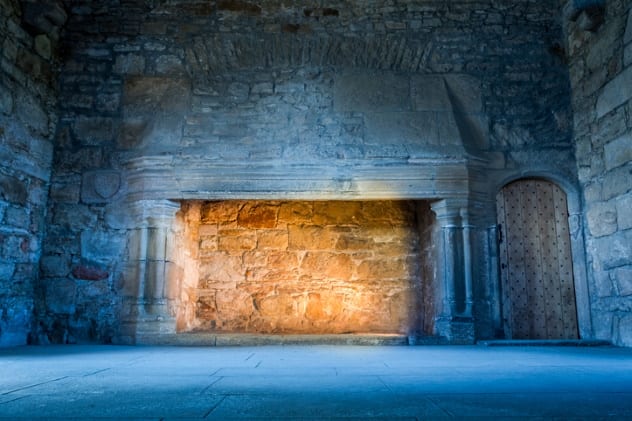
Stone is a bad insulator. Castles, because they’re often built in high-up places, are very windy. And as anyone who’s walked around a castle in the evening knows, they can get very cold at night. So most people assume that castles were cold, uncomfortable places to live.
What we have to remember, though, is that most castles contain multiple fireplaces. And more often than not, they were much larger than the ones we have in our homes today—especially in the great hall. These fires would have been kept burning throughout the day. We also have to remember that they had narrow windows and extremely thick walls—sometimes over 2 meters (6.6 ft) of solid rock. When you imagine an evening in the great hall, dominated by a fire that’s been burning all day and surrounded by dozens of people, it’s easy to see how castles could be surprisingly warm places.[8]
Of course, not every part of the castle would be warm. When we look at castle ruins today, the rooms that lack fireplaces are usually storage rooms or cellars. But these are the places which needed to be cold. And while towers would almost certainly have been a bit drafty, no one was expected to stay in one for very long. So if we ever discover time travel, don’t worry; that castle will give you a perfectly comfortable night’s sleep—if they’ll let you in.
2 The Castle Was One Unit
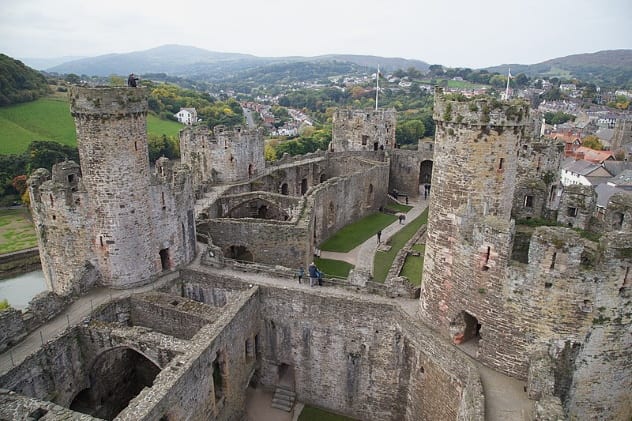
We know that medieval society was highly stratified. A peasant was a peasant, a noble was a noble, and the two could never swap places. But at first glance, the castle can look surprisingly egalitarian. Men and women of different social classes all shared the same space through necessity, even sleeping together in the same hall. Was this the one area in medieval life where the nobility and the commoners came together?[9]
While some lords may have done this, it certainly wasn’t the norm. And when we look closer, we can see that castles are, by and large, highly stratified places. The most prominent examples are Conwy and Chepstow, two royal castles in Wales which actually had their own inner courtyards which were set aside for the monarch’s use. Conwy’s courtyard even contained a private granary and chapel for the king’s use, all hidden behind a drawbridge which essentially made it a castle within a castle. In times when the king was not in residence, the drawbridge was pulled up, and the inner courtyard was disused.
At Harlech, the huge gatehouse had an entire upper floor which was the sole residence of the king or his castellan. Incidentally, it also contained most of the castle’s fireplaces. York Castle was dominated by Clifford’s Tower, an old stone keep at the top of a motte which was occasionally used to host the English Parliament. Though Clifford’s Tower famously sheltered the Jews of York when they were attacked by a local mob, it was the haunt of the royal treasury for much of the castle’s history, out of bounds even for the castle staff. In the later period, even castles owned by the nobility, like Conisbrough, had separate quarters for the lords which meant they lived a much more private, more luxurious life than their staff.
1 They Were Surrounded By Moats
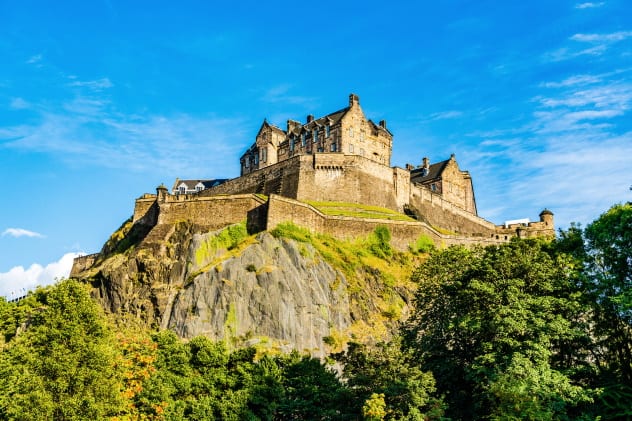
The stereotypical image of a castle is surrounded by a moat, usually filled with water and occasionally crocodiles. The crocodiles are a myth, but moated castles do exist. Most of them are faux-medieval mansions built in the early modern era, but at least one, Bodiam Castle in the UK, was built in medieval times. Castles with moats were exceedingly rare, though.[10]
There are several reasons for this, chief among them being that moats just weren’t practical. Keeping a moat full of water is no small task, and it might actually have made the castle easier to attack. Moats without water (so-called dry moats) were much more common. Their main purpose was to make it much harder to get siege equipment and men directly against the walls. They also made the walls taller: A wall is much harder to climb from the bottom of a moat than from flat ground.
Primarily, though, moats just weren’t needed. Since castles were designed to serve as vantage points, most are built at the tops of hills, which makes a moat redundant. Other castles, like Rochester, use rivers as a partial moat to force attackers to approach from one direction. Castles were nearly always built near naturally defensible terrain, negating the need for a castle-wide moat. The most common moat by far was the kind found at Harlech and Warwick castles: wide ditches which serve to patch up any areas not protected by the castle’s natural environment.
Read more about castles on Top 10 Fascinating Facts About Castles and 10 Unique Ruined Forts and Castles.







